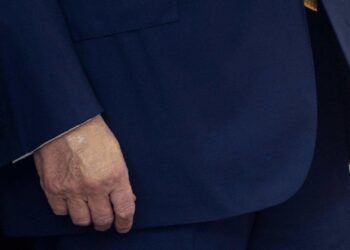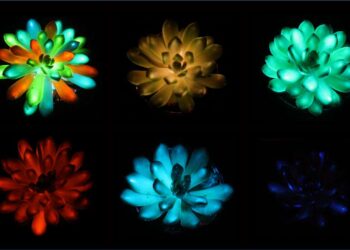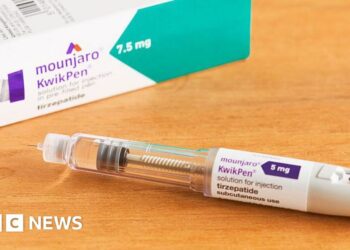PHOENIX — In the first randomized phase 3 trial to compare a home-based and facility-based supervised exercise program in patients with multiple sclerosis (MS), outcomes were equivalent at both 16 and 52 weeks. These findings now support home-based exercise as an evidence-based option for patients who prefer to work out at home.
Evidence of equivalence from a controlled trial is useful because “home-based exercise programs might improve both access and adherence for at least some patients,” said study investigator Deborah Backus, PT, PhD, vice president for research and innovation at the Shepherd Center, Atlanta, Georgia.
The findings were presented May 29 at the Consortium of Multiple Sclerosis Centers (CMSC) 2025 Annual Meeting.
First Phase 3 MS Exercise Trial
Conducted at eight participating US centers, the STEP trial was limited to patients with modest walking impairment. An Expanded Disability Status Scale (EDSS) score of 4.5 to 6.0 was among the entry criteria designed to select a population that was still ambulatory but with a need for intervention to preserve function.
“We wanted patients who can walk with some measured and perceived limitations but who were still able to exercise safely,” said Backus.
The similar facility- and home-based regimens were based on Guidelines for Exercise in MS (GEMS). In one segment of the trial, 189 patients were randomized to the facility-based (GEMS-F) or the home-based (GEMS-H) programs.
In the second segment of the trial, 190 patients were permitted to select their program, creating choice GEMS-F and choice GEMS-H groups that were compared with each other and with the randomized groups.
The primary outcome was the timed 25-foot walk test (T25FW). Other outcomes included the 6-minute walk test (6MWT), change in EDSS, and scores on the 12-item MS walking scale (MSWS-12). All outcomes were evaluated at 16 weeks and again at 52 weeks after the exercise programs were initiated.
Expressed in least-squares means adjusted for age, sex, and baseline EDSS, the improvement from baseline in T25FW was significant for all study groups and was similar between the GEMS-F and GEMS-H groups, in comparisons within and between the randomized and choice patient populations.
Also consistent across all four study groups, a substantial proportion of the improvement was lost between weeks 16 and 52, even if at least a numerical and, in some cases, a statistical advantage was maintained relative to baseline.
The 6MWT and MSWS-12 outcomes showed a similar pattern with a substantial improvement at 16 weeks that eroded over subsequent follow-up. Again, there was a numerical advantage at 52 weeks over baseline in all of the groups even if it did not reach significance in every arm.
The mean group EDSS scores, which were relatively preserved from baseline to week 16 declined from that timepoint to week 52 in all study groups.
There were modest differences in baseline characteristics among the four study groups, but the impact of the COVID pandemic was a major limitation of the study, said Backus. Dropouts by 52 weeks were substantial throughout the study population but were greater among those in the GEMS-H group, who were less likely to return to the facility for assessments.
Although exercise regimens in terms of aerobics and resistant training were the same for all groups, Backus acknowledged that there were some differences in access to equipment.
For example, participants in the GEMS-F group performed aerobic training on treadmills that were not necessarily available to all of those in the GEMS-H group, even if other forms of aerobic exercise were substituted.
Overall, Backus said that exercise intensity and other key aspects, such as coaching, were similar in the GEMS-F and GEMS-H groups.
Evidence Base for At-Home Exercise
Commenting on the findings, Robert W. Motl, PhD, professor of kinesiology, nutrition, and rehabilitation, University of Illinois, Chicago. and a co-chair of the session where the study was presented, noted that regardless of whether patients completed the exercise program at home or in a facility, all of them were provided with resources for fall prevention, and the lack of serious adverse events in any arm is an important finding from this study.
“With no safety differences and a comparable effect, the results provide an evidence basis for exercising at home, which is more convenient for patients and more cost-effective,” Motl said.
Another expert in rehabilitation for patients with MS, Frederick W. Foley, PhD, assistant professor in the Department of Neurology, Albert Einstein School of Medicine, Bronx, New York, agreed that the research provides support for home-based exercise in MS patients.
“There is a need to reduce the dependence of MS patients on care within a hospital or outpatient facility,” said Foley, who was not involved in the trial.
“It is not only less convenient and potentially more costly to receive care in a facility, but patients are also generally more comfortable in their own home,” he said.
The loss of benefit from week 16 to week 52, although expected and consistent with other lifestyle interventions, was disappointing. He pointed out that sustained benefit from exercise is elusive regardless of setting.
“The difficulty of achieving long-term benefit from behavioral interventions is pretty well recognized,” Foley said. He called this the “biggest challenge” for extending an exercise treatment effect.
Backus, Motl, and Foley report no potential conflicts of interest financial relationships. The study received financial support from the Patient-Centered Outcomes Research Institute (PCORI).
Source link : https://www.medscape.com/viewarticle/home-based-exercise-effective-clinic-care-ms-2025a1000et7?src=rss
Author :
Publish date : 2025-06-02 11:58:00
Copyright for syndicated content belongs to the linked Source.









